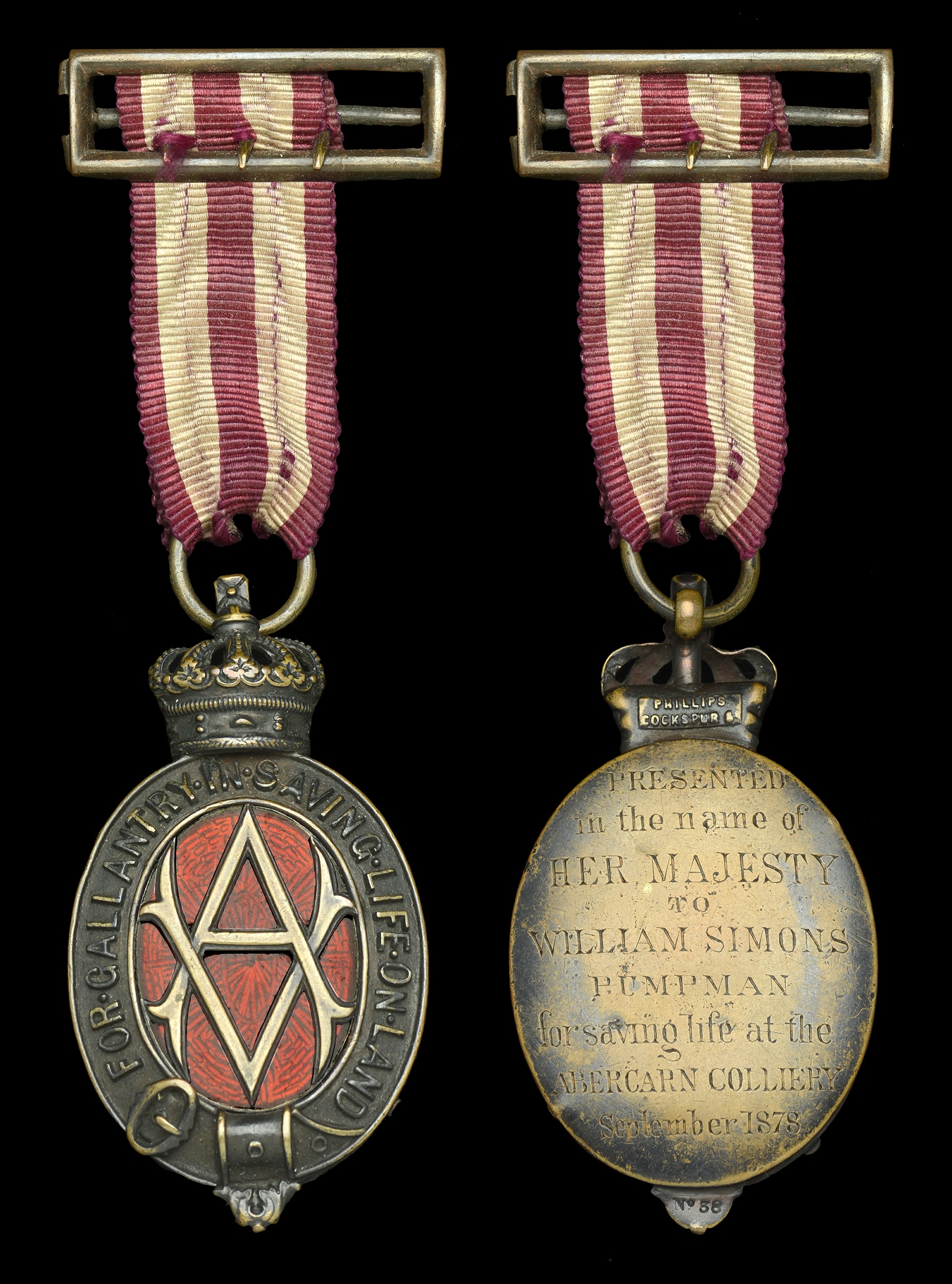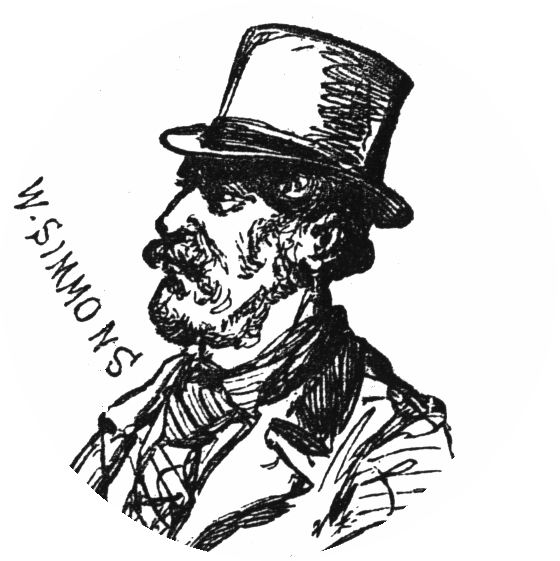A scarce Albert Medal Second Class for Land awarded to Pumpman W. Simons, for his gallantry during the Abercarn Colliery Disaster, 11 September 1878 Albert Medal, 2nd Class, for Gallantry in Saving Life on Land, bronze and enamel, the reverse officially engraved ‘Presented in the name of Her Majesty to William Simons, Pumpman, for saving life at the Abercarn Colliery, September 1878’, reverse of the crown with maker’s cartouché Phillips, Cockspur St., and officially numbered ‘38’, on original narrow riband with top bronze riband buckle, the red enamel centre professionally re-enamelled, minor dinting to reverse, good very fine £4,000-£5,000 --- Provenance: Dix Noonan Webb, December 2000. A.M. London Gazette 19 August 1879: ‘On the 11th September, 1878, an explosion of firedamp occurred in the Abercarn Colliery, in the county of Monmouth, whereby 260 persons perished, and on which occasion the greatest possible gallantry was exhibited in saving about 90 lives. The force of the explosion was terrific, doing great damage to the roadways and to the bottom of the shaft, and setting the coal and timber on fire in several places. Into this state of confusion and apparent danger to life these men, without hesitation, descended, and, although they discovered that fires were raging in the mine, and that consequently the chances of another explosion were considerable, they remained at their gallant and humane work of rescue, not re-ascending the shaft until they had satisfied themselves that no one was left alive below.’ For their gallantry, Albert Medals, First Class were awarded to Henry Davies and John Harris, and Albert Medals, Second Class were awarded to William Simons, Thomas Herbert, Miles Moseley, Charles Preen, William Walters, Lewis Harris, and Charles Morgan. The underground workings of the Prince of Wales Colliery, Abercarn, exploded at 12:30 in the afternoon of Wednesday 11 September 1878, while 359 men and boys were working in the galleries and roadways. Of these, only 90 were to survive - most of them by the efforts of the 9 rescuers who were later to be awarded the Albert Medal. William ‘Willie the Pump’ Simons (also recorded as Simmons and Simonds) was born in Cornwall in 1848. He was probably a tin miner by trade, eventually moving to find work at the iron ore mines at Merthyr Tydfil, South Wales. By the time of the 1881 census he was working at the Prince of Wales Colliery, Abercarn, which was owned by the Ebbw Vale Mining Company. Known to his Welsh workmates as ‘Willie the Pump’, because he handled the huge water pump which kept the underground galleries from flooding, he was not underground at the time of the explosion. Upon hearing the explosion he ran to the pit, where he was asked to pump water down the pit shaft in order to damp down the smoke and fumes billowing up the shaft. This he did. The pit-head roof had collapsed by the force of the explosion coming up the mineshaft, so the surface men immediately began clearing the debris to allow access to the up-shaft. As the collapsed pithead roof was cleared, it was found that the cage cables and winding gear had miraculously survived, so the cage which was at the shaft bottom was pulled up to the top. Simons and one other man immediately went into the cage, and were lowered down the up-shaft to confirm that the water pump was functioning, when it was confirmed that it was, they then returned to the surface for help and direction. Simons and a small group of five men then went back down the 900 feet to the pit bottom in the two-deck cage. The cage was stopped about 10-20 feet from the bottom due to damage from the explosion, but Simons managed to work his way down through the debris to about six feet from the bottom, where he heard men severely burned by the explosion screaming in agony. He then directed the others how to get down, and they managed to bring out the first nine survivors, sending them up to the surface. The group then began locating and sending up the other survivors, 70 or 80 in all, most of them badly burned. Three other men joined in to help. Some rescuers were sent to the adjacent colliery at Cwmcarn to see if they could access the site of the explosion from that side. In addition to being awarded the Albert Medal, Simons was also specifically mentioned in the Coroner’s Report: ‘The pump-man (William Simons), who I believe never ceased from continuous labour for 12 or 14 hours after the explosion, although he, too, was surrounded by danger nearly every moment.’ Sold with a large quantity of copied research, including a detailed history of the Colliery.






